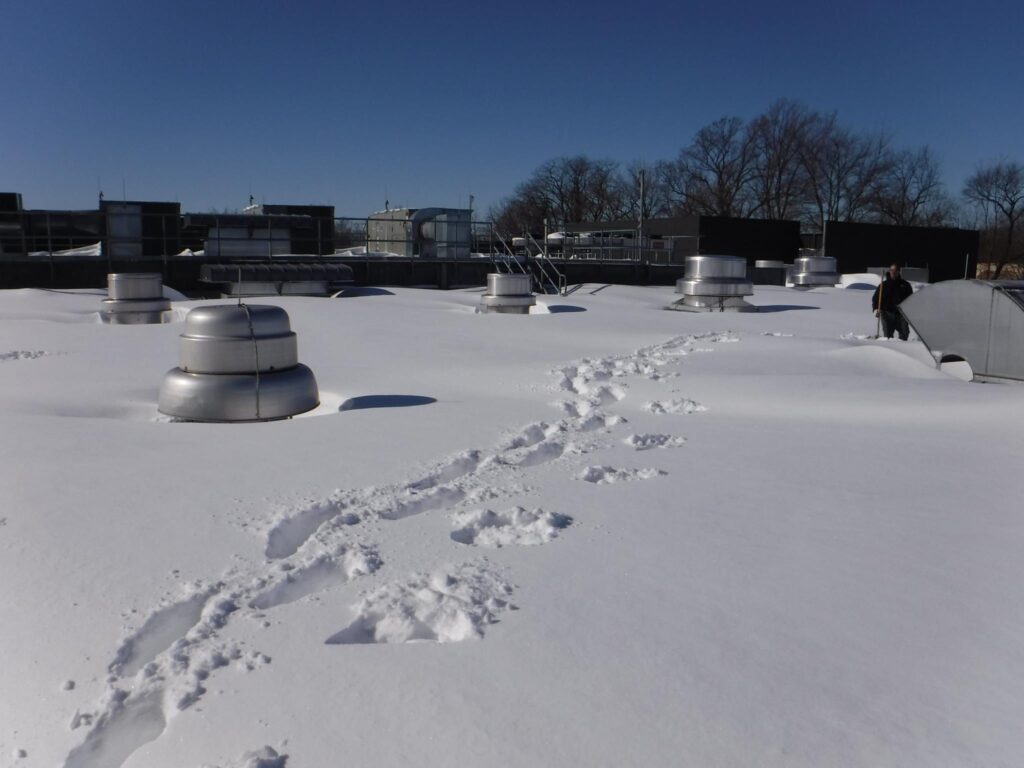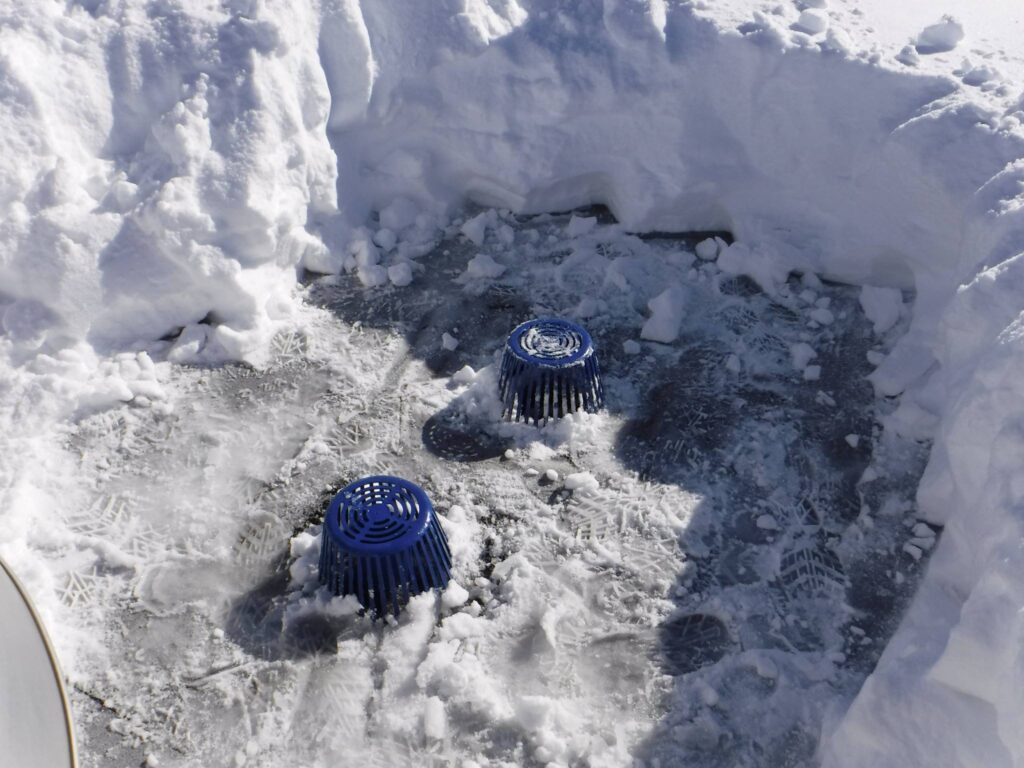Prepare for Winter: Secure Your Roof with a Proactive Plan
If you wait until snow accumulates on your roof to call around looking for snow removal services, it may be too late. Take action before heavy snow has the opportunity to create more weight than your roof can bear.
The best course of action is to prepare before heavy snowfall damages the roof. You can do that by contacting GSM Roofing for a plan that includes a comprehensive checklist that will determine high-impact snow removal areas and identify potential hazards. Serving businesses in Pennsylvania, New Jersey, Delaware, and Maryland, we can handle all kinds of commercial roofing systems, including large retail stores and malls as well as warehouses, schools, medical buildings, and offices.
FAQs
Why is Commercial Rooftop Snow Removal Important?
Heavy snow accumulation can put excessive weight on your roof, leading to structural damage, leaks, or even roof collapse. Removing snow helps prevent these risks and protects your building.
How Much Snow can a Commercial Roof Hold?
Generally, most commercial roofs are designed to handle a snow load of about 15 to 40 pounds, but this depends on several factors, including:
- Type of snow: is it fluffy, wet, icey, or packed snow?
- Age of roof: old, damaged roofs may not be able to hold as much snow
- Roof steepness: flat roofs are more vulnerable to heavy snow loads because snow and ice tend to accumulate rather than slide off
Is it Necessary to Remove all the Snow, or Just Part of It?
In most cases, only part of the snow needs to be removed to reduce the load to a safe level. Complete removal is often unnecessary and can increase the risk of roof damage.
Can Roof Snow Removal Services Help Prevent Ice Dams?
Yes, professional snow removal reduces the risk of ice dams by preventing snow from melting and refreezing at the roof’s edges, which can cause blockages and water damage.
What are the Main Factors that Determine the Price of Commercial Roof Snow Removal Services?
- Roof size: larger roofs take more time, labor, and equipment to clear
- Roof type and pitch: flat roofs are generally easier (though still dangerous), while steep or complex rooflines require specialized safety measures and more time
- Building height: taller buildings may need cranes, lifts, or additional fall-protection gear, which increases cost
- Snow depth and weight load: heavy accumulations or wet, dense snow take longer to remove and may require multiple visits to prevent structural strain
- Obstacles and roof features: HVAC units, skylights, vents, and solar panels make navigation and snow removal more complex
- Safety requirements: OSHA compliance, safety harnesses, spotters, and additional crew members add to labor costs
- Urgency of service: emergency snow removal (to prevent collapse or leaks) often comes at a premium
- Ice removal and de-Icing: removing ice dams or applying de-icing materials increases cost
- Disposal requirements: if snow must be hauled away rather than simply cleared to the edge of the roof, additional labor and equipment are required
- Location: regional labor costs and accessibility (urban vs. suburban vs. rural) impact pricing
Is Commercial Roof Snow Removal Covered by Insurance?
It depends on your policy. Some insurance plans cover snow removal if it’s deemed necessary to prevent damage. It’s best to check with your insurance provider for specific coverage details.
Will you be prepared for the upcoming winter? Want peace of mind and the assurance that your employees stay safe on solid ground?
Then get in touch with the roof snow removal professionals at GSM Roofing. We’ll look at your building, establish a plan, and quote a price for removing snow. It’s that easy.



